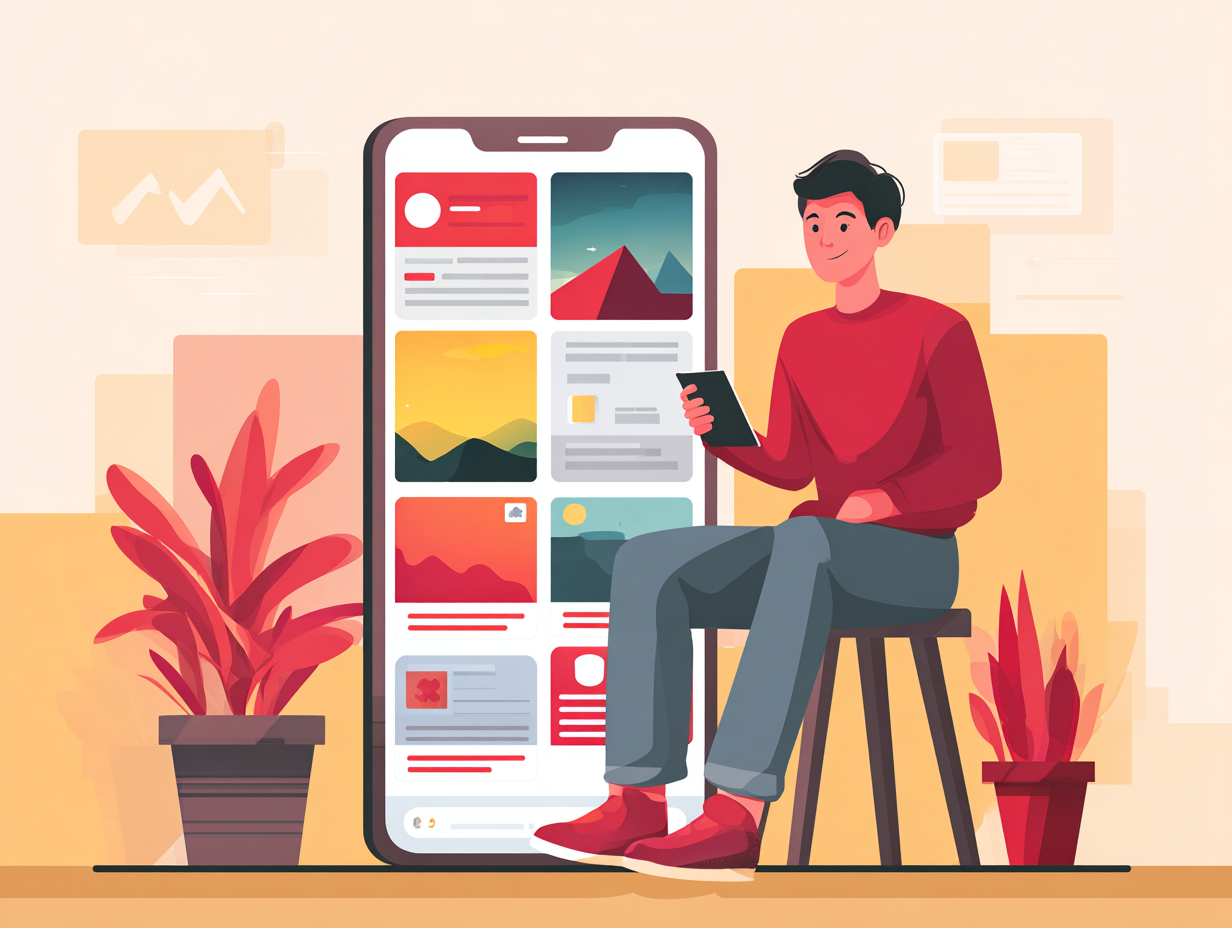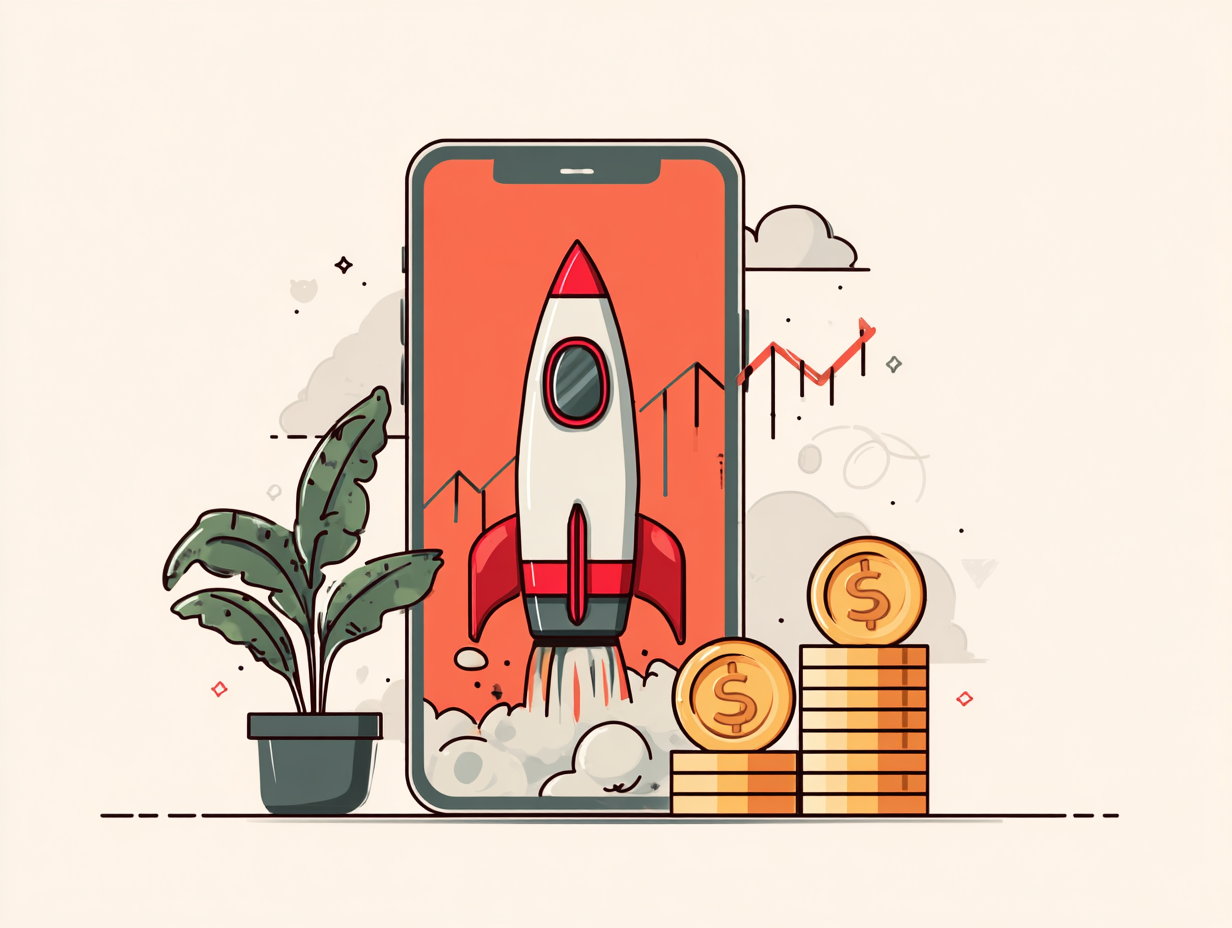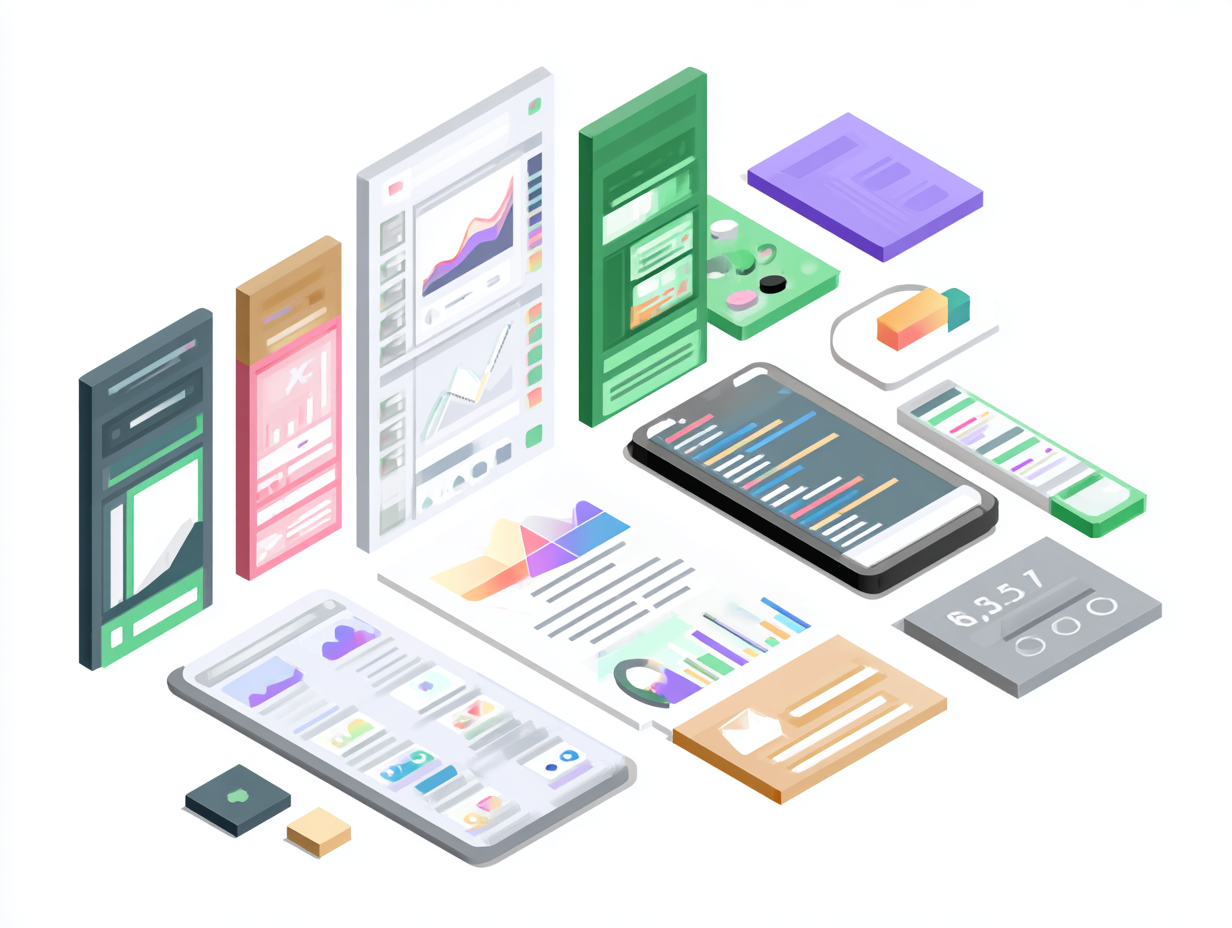
User retention is the lifeblood of successful mobile apps. While acquiring new users is expensive and competitive, keeping existing users engaged is often more cost-effective and profitable. Studies show that increasing user retention by just 5% can boost profits by 25-95%.
This guide reveals proven retention tactics used by top apps like Instagram, Spotify, and Duolingo. You'll learn psychological principles, technical implementations, and practical strategies to transform your app into a habit-forming experience that users can't resist.
ONBOARDING EXCELLENCE
First impressions matter. A great onboarding experience can increase Day 1 retention by up to 50%. Make users successful immediately, not confused.
// Progressive Onboarding Flutter Implementation
class OnboardingFlow extends StatefulWidget {
@override
_OnboardingFlowState createState() => _OnboardingFlowState();
}
class _OnboardingFlowState extends State<OnboardingFlow> {
final PageController _pageController = PageController();
int _currentPage = 0;
final List<OnboardingStep> steps = [
OnboardingStep(
title: "Welcome to YourApp",
description: "Discover amazing features designed just for you",
action: "Get Started",
isInteractive: false,
),
OnboardingStep(
title: "Let's personalize your experience",
description: "What interests you most?",
action: "Choose Interests",
isInteractive: true,
widget: InterestSelector(),
),
OnboardingStep(
title: "Enable notifications",
description: "Stay updated with personalized content",
action: "Allow Notifications",
isInteractive: true,
widget: NotificationPermissionWidget(),
),
];
@override
Widget build(BuildContext context) {
return Scaffold(
body: SafeArea(
child: Column(
children: [
// Progress indicator
LinearProgressIndicator(
value: (_currentPage + 1) / steps.length,
backgroundColor: Colors.grey[200],
valueColor: AlwaysStoppedAnimation(Theme.of(context).primaryColor),
),
Expanded(
child: PageView.builder(
controller: _pageController,
onPageChanged: (page) => setState(() => _currentPage = page),
itemCount: steps.length,
itemBuilder: (context, index) {
return OnboardingStepWidget(
step: steps[index],
onNext: _nextStep,
onSkip: _skipOnboarding,
);
},
),
),
],
),
),
);
}
void _nextStep() {
if (_currentPage < steps.length - 1) {
_pageController.nextPage(
duration: Duration(milliseconds: 300),
curve: Curves.easeInOut,
);
} else {
_completeOnboarding();
}
}
void _completeOnboarding() {
// Track completion
Analytics.track('onboarding_completed', {
'steps_completed': _currentPage + 1,
'total_steps': steps.length,
});
// Navigate to main app
Navigator.pushReplacement(context,
MaterialPageRoute(builder: (_) => MainApp()));
}
}🎯 Onboarding Best Practices:
- • Show value immediately, explain features later
- • Use progressive disclosure to avoid overwhelming users
- • Make the first action simple and rewarding
- • Allow skipping optional steps
- • Personalize the experience based on user choices
SMART PUSH NOTIFICATIONS
Push notifications can increase app retention by 3x when done right, or kill your app when done wrong. The key is relevance, timing, and personalization.
// Smart Notification System
class NotificationManager {
static final FirebaseMessaging _messaging = FirebaseMessaging.instance;
// Behavioral triggers
static Future<void> setupBehavioralNotifications() async {
// Day 1: Welcome back message
await scheduleNotification(
delay: Duration(hours: 24),
title: "Welcome back! 🎉",
body: "Discover what's new since your last visit",
type: NotificationType.welcome,
);
// Day 3: Feature discovery
await scheduleNotification(
delay: Duration(days: 3),
title: "Did you know? 💡",
body: "You can save your favorite items for quick access",
type: NotificationType.feature,
);
// Day 7: Social proof
await scheduleNotification(
delay: Duration(days: 7),
title: "Join 10,000+ happy users! 🌟",
body: "See what others are loving about the app",
type: NotificationType.social,
);
}
// Personalized notifications based on user behavior
static Future<void> sendPersonalizedNotification(User user) async {
final behavior = await UserBehaviorAnalyzer.analyze(user);
if (behavior.hasNotUsedAppFor(days: 3)) {
await sendReEngagementNotification(user);
} else if (behavior.isActiveUser && behavior.hasNewContent) {
await sendContentNotification(user);
} else if (behavior.hasUnfinishedActions) {
await sendReminderNotification(user);
}
}
// A/B test notification strategies
static Future<void> sendABTestNotification(User user) async {
final variant = ExperimentManager.getVariant(user.id, 'notification_copy');
String title, body;
switch (variant) {
case 'emotional':
title = "We miss you! 💙";
body = "Your progress is waiting for you";
break;
case 'functional':
title = "Continue where you left off";
body = "3 new updates available";
break;
case 'social':
title = "Your friends are ahead! 🏃♂️";
body = "Catch up with the latest activity";
break;
}
await _sendNotification(title, body, variant);
}
// Optimal timing based on user patterns
static Future<DateTime> getOptimalSendTime(String userId) async {
final usage = await UserAnalytics.getUsagePatterns(userId);
// Find when user is most likely to engage
final optimalHour = usage.getMostActiveHour();
final optimalDay = usage.getMostActiveDay();
return DateTime.now()
.add(Duration(days: optimalDay))
.copyWith(hour: optimalHour, minute: 0);
}
}📱 Notification Best Practices:
- • Segment users based on behavior and preferences
- • Use rich media and interactive notifications
- • A/B test different messages and timing
- • Respect user preferences and quiet hours
- • Track open rates and adjust frequency accordingly
GAMIFICATION & REWARDS
Gamification leverages psychological principles to make your app addictive in a positive way. Users love progress, achievements, and rewards that make them feel accomplished.
// Gamification System
class GamificationEngine {
static Future<void> trackUserAction(String userId, UserAction action) async {
// Award points for different actions
final points = _calculatePoints(action);
await UserProgress.addPoints(userId, points);
// Check for level ups
final newLevel = await _checkLevelUp(userId);
if (newLevel != null) {
await _showLevelUpReward(userId, newLevel);
}
// Check for achievements
final achievements = await _checkAchievements(userId, action);
for (final achievement in achievements) {
await _unlockAchievement(userId, achievement);
}
// Update streaks
await _updateStreaks(userId, action);
}
static int _calculatePoints(UserAction action) {
switch (action.type) {
case ActionType.dailyLogin: return 10;
case ActionType.completedTask: return 25;
case ActionType.sharedContent: return 15;
case ActionType.invitedFriend: return 100;
case ActionType.weeklyGoalMet: return 200;
default: return 5;
}
}
static Future<void> _showLevelUpReward(String userId, Level newLevel) async {
final rewards = newLevel.rewards;
// Show celebration animation
await showDialog(
context: navigatorKey.currentContext!,
builder: (_) => LevelUpDialog(
newLevel: newLevel,
rewards: rewards,
onClaimed: () => _claimRewards(userId, rewards),
),
);
// Send push notification for offline users
if (!await UserState.isAppActive(userId)) {
await NotificationManager.send(
userId: userId,
title: "🎉 Level Up!",
body: "You've reached level ${newLevel.number}! Claim your rewards",
);
}
}
}
// Streak System
class StreakManager {
static Future<void> updateDailyStreak(String userId) async {
final lastVisit = await UserData.getLastVisitDate(userId);
final today = DateTime.now();
if (_isConsecutiveDay(lastVisit, today)) {
await UserProgress.incrementStreak(userId);
final currentStreak = await UserProgress.getCurrentStreak(userId);
// Milestone rewards
if (currentStreak % 7 == 0) {
await _giveStreakBonus(userId, currentStreak);
}
// Show streak celebration
await _showStreakUpdate(userId, currentStreak);
} else if (_isStreakBroken(lastVisit, today)) {
await UserProgress.resetStreak(userId);
await _showStreakLostMessage(userId);
}
await UserData.updateLastVisitDate(userId, today);
}
static Future<void> _giveStreakBonus(String userId, int streak) async {
final bonus = StreakBonus(
days: streak,
points: streak * 10,
specialReward: streak >= 30 ? SpecialReward.premium : null,
);
await UserProgress.addBonus(userId, bonus);
await NotificationManager.scheduleStreakReminder(userId);
}
}🎮 Gamification Principles:
- • Use variable ratio rewards (like slot machines)
- • Create meaningful progress indicators
- • Design achievable short-term and challenging long-term goals
- • Make achievements social and shareable
- • Use loss aversion (streaks users don't want to break)
CONTENT PERSONALIZATION
Personalized content increases user engagement by 74%. Use AI and machine learning to deliver content that feels tailor-made for each user.
// Content Personalization Engine
class PersonalizationEngine {
static Future<List<Content>> getPersonalizedFeed(String userId) async {
final userProfile = await UserProfile.get(userId);
final behaviorData = await UserBehavior.analyze(userId);
final contextData = await ContextAnalyzer.getCurrentContext(userId);
// Combine multiple signals
final recommendations = await _generateRecommendations(
userProfile: userProfile,
behavior: behaviorData,
context: contextData,
);
// A/B test different recommendation algorithms
final algorithm = ExperimentManager.getAlgorithm(userId);
return await algorithm.rankContent(recommendations);
}
static Future<List<Content>> _generateRecommendations({
required UserProfile userProfile,
required UserBehavior behavior,
required ContextData context,
}) async {
final candidates = <Content>[];
// Interest-based recommendations
candidates.addAll(await ContentService.getByInterests(
userProfile.interests,
limit: 20,
));
// Behavior-based recommendations
candidates.addAll(await ContentService.getSimilarContent(
behavior.viewedContent,
limit: 15,
));
// Trending content with user's preferences
candidates.addAll(await ContentService.getTrendingForUser(
userProfile,
limit: 10,
));
// Time-sensitive content
if (context.isWeekend) {
candidates.addAll(await ContentService.getWeekendContent(limit: 5));
}
// Social recommendations
final friends = await SocialGraph.getFriends(userProfile.userId);
candidates.addAll(await ContentService.getFriendsActivity(
friends,
limit: 8,
));
return candidates;
}
// Dynamic content optimization
static Future<void> optimizeContentForRetention(String userId) async {
final engagementData = await Analytics.getUserEngagement(userId);
// Identify content that drives retention
final retentionDrivers = engagementData.getRetentionDrivers();
// Adjust content mix based on what keeps user coming back
await ContentMixer.adjustContentWeights(userId, {
ContentType.educational: retentionDrivers.educational * 1.2,
ContentType.entertainment: retentionDrivers.entertainment * 1.1,
ContentType.social: retentionDrivers.social * 1.3,
ContentType.news: retentionDrivers.news * 0.9,
});
// Predict churn risk and adjust accordingly
final churnRisk = await ChurnPredictor.predictRisk(userId);
if (churnRisk > 0.7) {
await _deployRetentionContent(userId);
}
}
}🤖 Personalization Tips:
- • Start with explicit preferences, evolve with implicit behavior
- • Use collaborative filtering and content-based recommendations
- • Consider contextual factors (time, location, device)
- • Balance familiar content with discovery
- • Continuously learn and adapt to changing preferences
KEY RETENTION METRICS TO TRACK
📊 CORE METRICS
- • Day 1, 7, 30 retention rates
- • Session frequency and duration
- • Feature adoption rates
- • Time to first value
- • Churn rate and reasons
🎯 ENGAGEMENT METRICS
- • Daily/Monthly active users (DAU/MAU)
- • Push notification open rates
- • In-app purchases and upgrades
- • Social sharing and referrals
- • Support ticket volume


